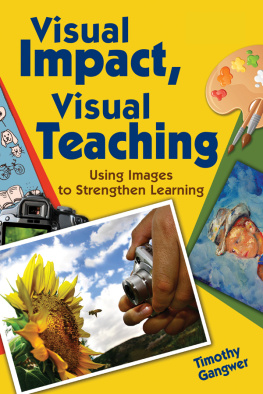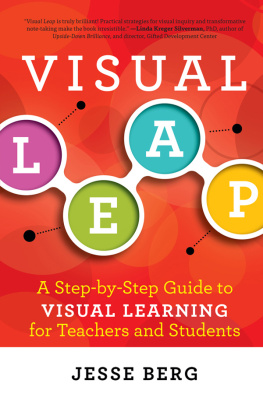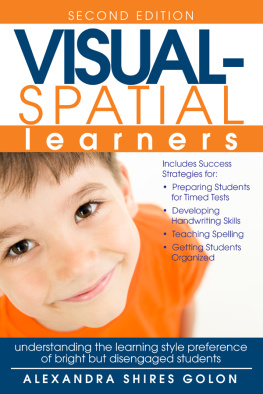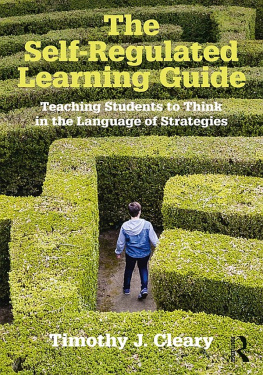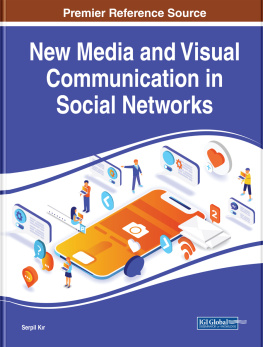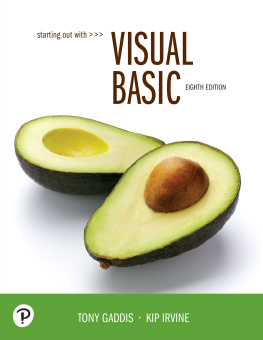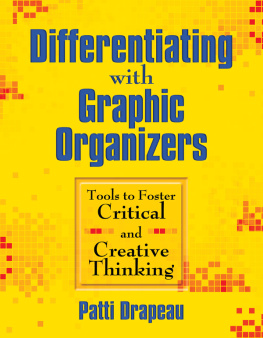Dedicated to the inspiration
and the vision of children throughout the world.
Copyright 2009 by Corwin Press
First Skyhorse Publishing edition 2015
All rights reserved. No part of this book may be reproduced in any manner without the express written consent of the publisher, except in the case of brief excerpts in critical reviews or articles. All inquiries should be addressed to Skyhorse Publishing, 307 West 36th Street, 11th Floor, New York, NY 10018.
Skyhorse Publishing books may be purchased in bulk at special discounts for sales promotion, corporate gifts, fund-raising, or educational purposes. Special editions can also be created to specifications. For details, contact the Special Sales Department, Skyhorse Publishing, 307 West 36th Street, 11th Floor, New York, NY 10018 or .
Skyhorse and Skyhorse Publishing are registered trademarks of Skyhorse Publishing, Inc., a Delaware corporation.
Visit our website at www.skyhorsepublishing.com.
10 9 8 7 6 5 4 3 2 1
Library of Congress Cataloging-in-Publication Data is available on file.
Cover designed by Karine Hovsepian
Print ISBN: 978-1-63220-575-9
Ebook ISBN: 978-1-63220-990-0
Printed in China
Contents
Foreword
A s I ponder the role I am to assume as writer of the foreword to Visual Impact, Visual Teaching , I consider the numerous other roles I play in todays life. I ask myself, Why pick me? My most predominant characters have been illustrator and painter. I have no classroom or education experience.
You are likely a teacherperhaps standing in a bookstore attempting to ascertain the value of this book by reading this foreword. What authority do I hold that would interest you in my opinion of the strategies? My career as an artist does center on visual communication. Professionally, I see the need for the next generation to have a vocabulary and skill for interpretation in place to understand and digest my work be it editorial illustration, book illustration or oil painting.
Or you could be a parent. AHA! There is a good connection. I am a father. As my boy speeds past the age of four, I have discovered that I have thoughts and, quite possibly, opinions on his future education. I also find that I have a desire to seek out information, opinions, and strategies so that I can feel confident in my actions and decisions concerning that education.
So my responsibility in todays role as Foreword Writer becomes clearconvince educators, parents, and more to read and utilize this book. Having found time to relax, read this book, and consider its meaning and usefulness, Im inspired to make a contribution to its success in the education community. Go ahead. Read it and pass it on.
As my wife and I consider future schools, it is of high concern and importance to us whether or not the arts and art education are included in the curriculum. Unfortunately, such programs are limited and dwindling. How is my son to develop the visual skills I so believe he needs? What about creative thinking and problem solving skills? When the boy grows up and shuns my artistic ways in favor of being an attorney or an engineer, hell need to be an adept creative thinker if he is to excel. Hell need to be able to decipher and understand the variety and abundance of visual stimuli that will surround him and influence him. Hell need to be prepared.
What I find great about the ideas set forth within this book is that the learning and concept exercises that would normally be accomplished in the art class might also be accomplished by the math teacher or the coach or even the principal or the parent. Also, no matter the knowledge content to be delivered, I recognize that an understanding of how to be a visual teacher would affect the performance of any educator and potentially greatly increase students understanding and, most important, retention of information delivered. My sons future education looks better.
This book tells of how science has come a long way in understanding the way the brain works and how we as humans learn. Im excited to learn here about the various learning styles that have been defined, the story behind the left brain/right brain concept, and just how many neurons fire in the blink of an eye. It is interesting to learn about how color and light affect the learning environment. This information provides some scientific authenticity to the strategies put forth. The strategies are then realized through a number of possible purposeful activities. My sons future education looks even better.
The activities and ways of carrying out classroom days as visual teachers seem fun and engaging. The elements of their implementation are simple and accessible. Im even curious to perform the activities myself, to witness my own results. I recognize a similarity of the photo activity with my oil painting process. I know that when painting I dont approach a blank canvas with a specific notion in mind of what the end result will be. I begin simply making marks, which represent how I feel at that moment. Once the canvas is filled, I then turn it over and over until I find an image that I can make out if I use my imaginationlike making out animals in clouds. I then apply painting skills to clarify the image. Much like the photo activity defined in this book, the end painting is very telling of my inner thoughts and feelings of the time when I created it. Why did I choose to make the face smiling? What am I expressing in that gesture? Why those clothes? Why red? The photo activity is such that it allows an unexpected tap into below-surface feelings, motivations, and perceptions. Tim clarifies the significance of this tap by relating his own inspiring experiences with the activity. These are great stories where understanding of the individual is achieved and the opportunity for learning is expandeda success for both teacher and student.
My son is now four. It would be great to visit his kindergarten next year and witness the strategies of visual teaching being utilized and being successful. All it takes is to awake the creative spirit that dwells in each one of us. It is a valuable resource and aspect of being human. Good luck and good teaching.
Nathan Jensen, Visual Artist Austin, TXwww.natespace.com
Preface
M any people think verbally. The spoken language flows through the thought processes like a typewriter creating a story. All people think visually, continually translating words and ideas into pictures so that concepts and thoughts surface. In other words, we all understand, or decode, the visual language, but a true visual thinker has nonlinear thought, as if to be exercising cognition through computer simulation, then transforming the data into animation, or encoding. Thoughts become movies, images, and symbols. Language becomes multidimensional scenarios of concepts and ideas instead of the audible resonance of language. Ideally, the visual thinker has the ability to think beyond the meaning of language, using personal referents to meaning that cannot be translated into words. Visual thinking involves classification that is both parallel and holistic. Though linguistic thinkers may believe that visual thinkers center on detail, in fact this occurs because of the powerful memory of visual thinkers. They literally see the answers to problems. This is a tremendous advantage, enabling students to build entire information systems using their imaginations. If you would like to witness what happens in the mind of a visual thinker, look over their shoulder as they construct a jigsaw puzzle.

